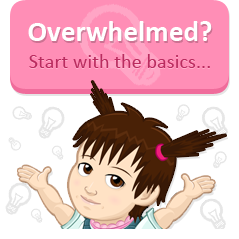alhamdulillah. they learned that a long time ago, and yet like to practice older lessons. ameen.
hmmm - yes, i also wondered what do with the issue of red vs. black text per the Doman method instructions; and I had already used red text for the Doman method for English.
By the time I had the materials ready, the girls began learning Noorani (Lesson 1 Day 1 Sets 1 - 5) when they were 2 years 4 months old, and I just used the book itself, converted to Doman method format and schedule, inside of LR. Noorani (English edition) Lesson 4 (harakat), the letters are black and all of the harakat are red; and for Lesson 5 (tanween), the letters are black and the tanween are colored either yellow for al-huroof al-halqeeyah, blue for al-huroof al-shafaweeyah, or purple for al-huroof al-lisaaneeyah. The Noorani Arabic blue edition also has the same color coding for tanween, but different colors are used for tanween to indicate the same groupings of letters.
For other lessons, such as Lesson 7 (miniature long vowels), the harakat are also color coded according to groupings of huroof al-iqlaab, huroof al-idghaam (with and without ghunnah), huroof al-ith-haar, huroof al-ikhfaa', etc. And there are notes that explain the color coding for the various lessons. For the practice lessons with words, medd is red, ghunnah is green, and qalqalah is aqua blue. In Lesson 17, the final lesson, there is an additional color coding for idghaam bi ghunnah as purple (for a few examples only).
There are also two publications from Jeddah, Juz 'Amma and last 3 Juz of the mushaaf, that have the color coding of the Arabic blue edition (which is slightly different than the English yellow edition) with green for medd, red for ghunnah, and blue for qalqalah - that remind the child to apply these rules. I personally prefer Dar-al-Maarifah's colors for the tajweed rules ( in brief:
http://www.easyquran.com/en/preface.htm ) and the girls actually like using the Madinah mushaaf, instead of the color-coded Juz Amma, alhamdulillah, although they will use the Juz Amma booklet because it less heavy and slightly larger print than the mushaaf.
For the Qur'anic words and ayat sets I am creating (in black only), I wish I had more time to create an additional set with color-coding to show the tajweed rules using Dar-al-Maarifah's color-coding ( detailed here:
http://www.easyquran.com/en/flashquran.htm ) , and maybe it is something I can do later, insha'Allah. However, currently, I just use plain black text, and point out the rule and make sure they pronounce it correctly. And I also believe that they can learn it just as countless previous generations have, because color-coding is a relatively new method (
http://www.easyquran.com/en/introd.htm )

So, for the reader, I think color-coding is good as they are first learning the base lessons of various syllable combinations, and then the words used as practice of the syllables are in black for both the letters and the harakat.









